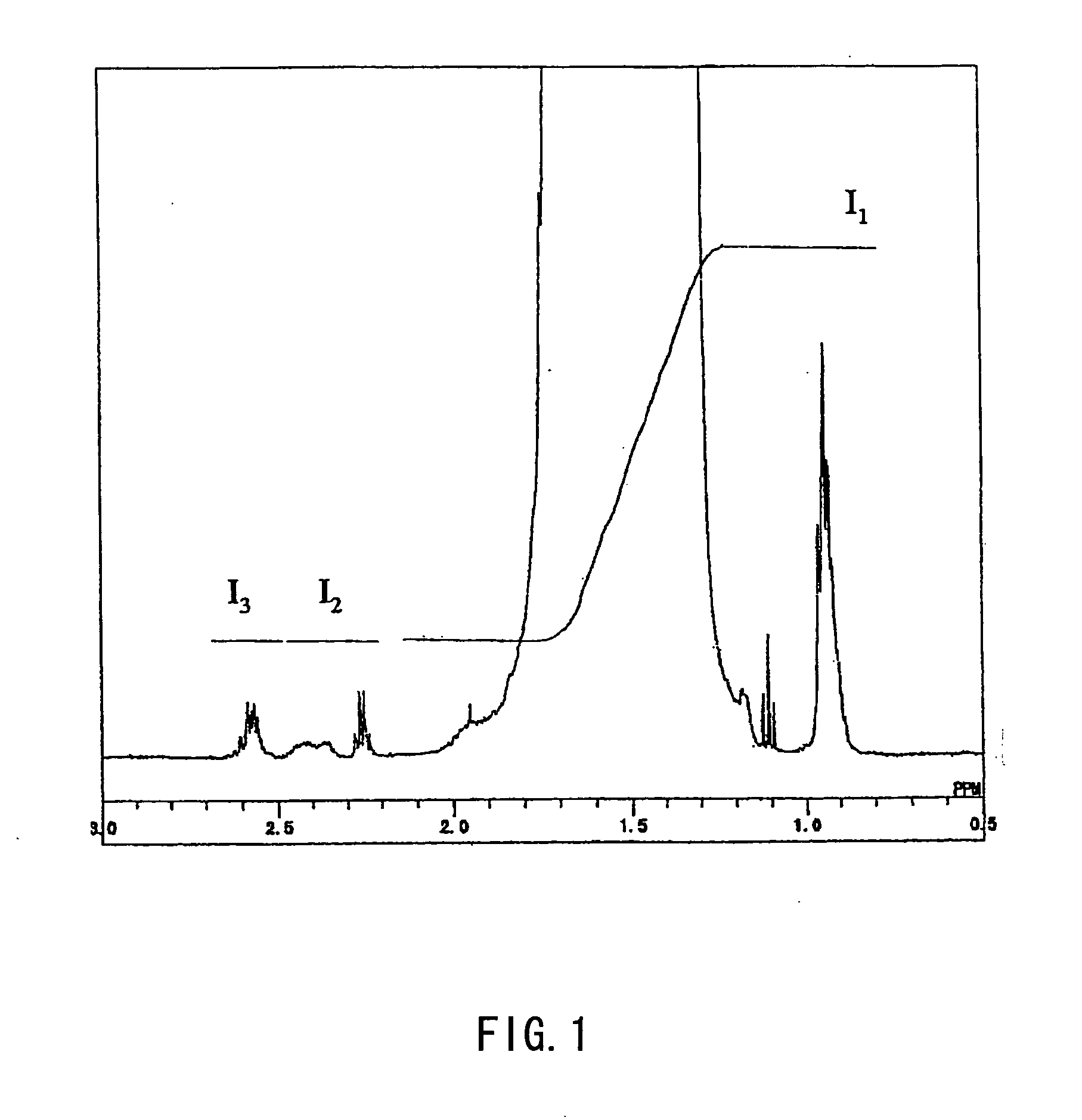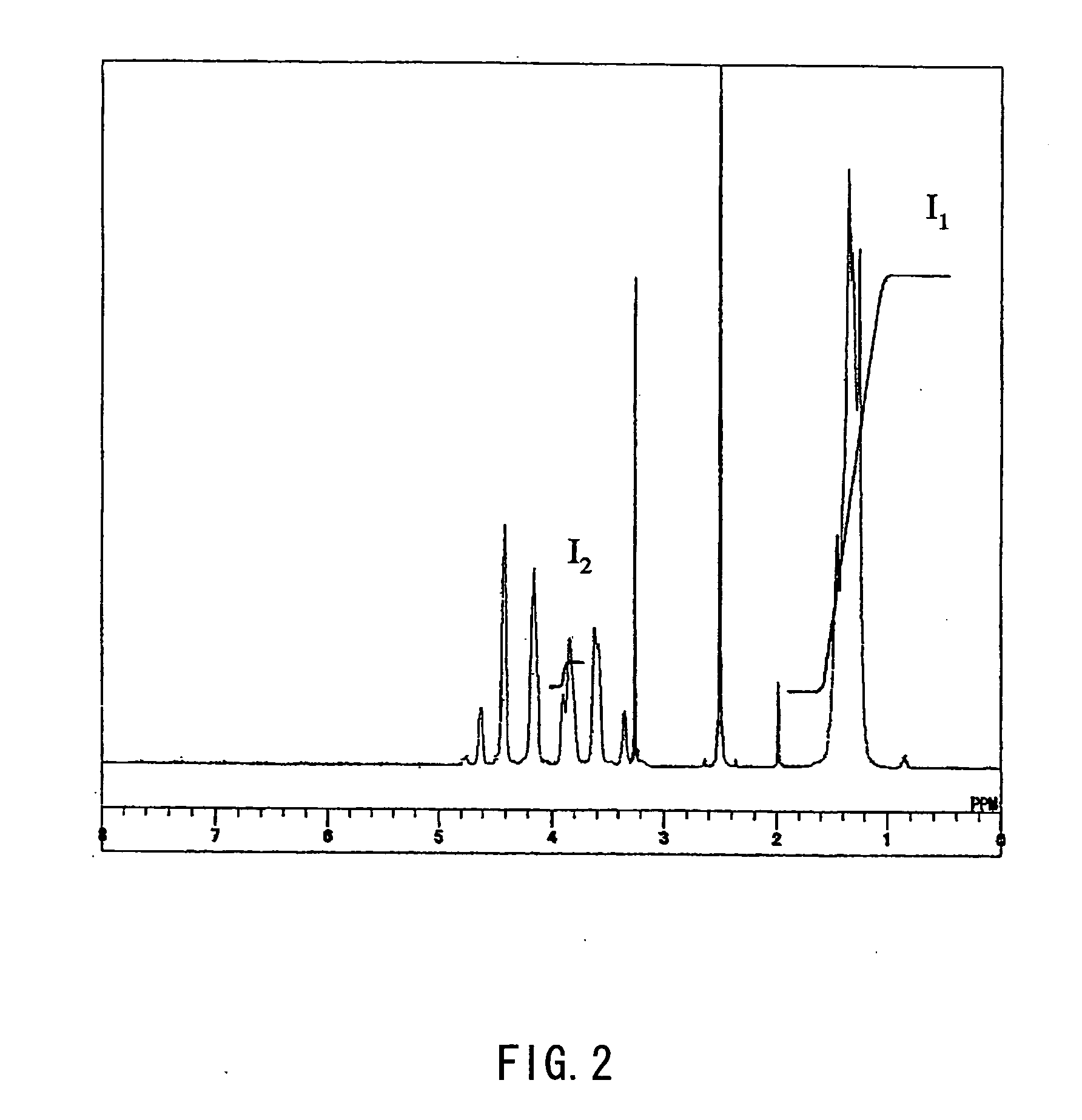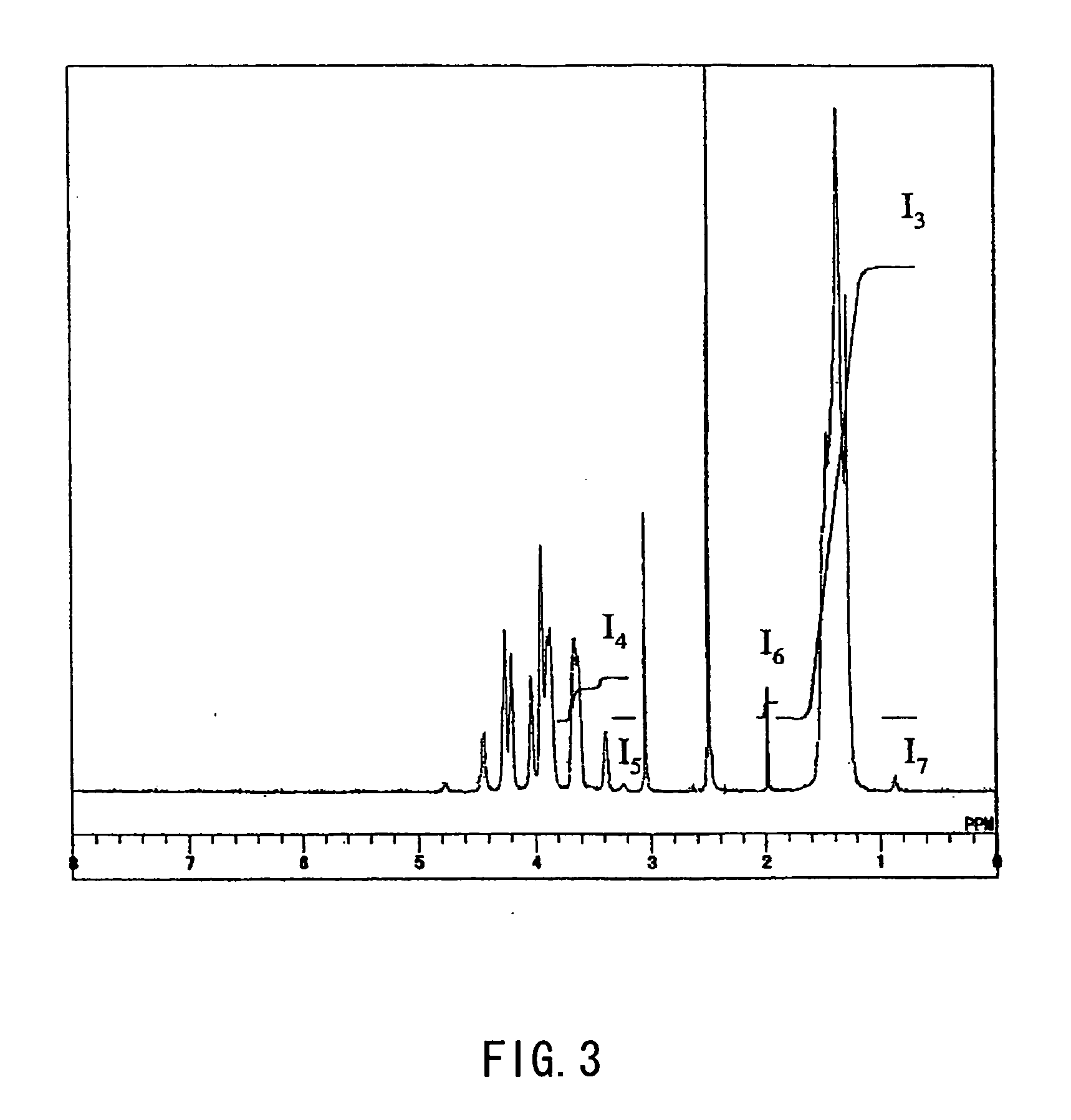Ethylene-vinyl alcohol based copolymer and method for production thereof
a technology of ethylenevinyl alcohol and copolymer, applied in the field of et, can solve problems such as affecting long-term stability, and achieve the effects of improving the long-term stability of melt molding the evoh resin composition, good balance, and suppressing the coloring of the molded articl
- Summary
- Abstract
- Description
- Claims
- Application Information
AI Technical Summary
Benefits of technology
Problems solved by technology
Method used
Image
Examples
example 1
[0159] Polymerization was conducted in a 250 L capacity polymerization tank with a stirrer having a cooling coil inside, under the following conditions.
Vinyl acetate102.7 kgMethanol18.4 kgMethanol solution of 2,2′-azobis-(2,4-dimethylvaleronitrile)(concentration: 1 g / L)Polymerization initiator Initial charge amount102.7 mLFeed amount during polymerization0.32 L / hPolymerization temperature60° C.Ethylene pressure in polymerization tank39.0 kg / cm2Polymerization time3.3 hrs.Monomer conversion ratio9.9%
[0160] It should be noted that the monomer conversion ratio (polymerization rate) was calculated in terms of vinyl acetate.
[0161] The copolymerization solution was supplied to a column for purging, and after methanol vapor was introduced from a lower portion of the column to remove unreacted vinyl acetate via a top portion of the column, a 45% methanol solution of the copolymer was obtained. The copolymer was an EVAc having an ethylene content of 32 mole % and a vinyl acetate content of...
example 2
[0164] An EVOH resin composition having an ethylene content of 32 mole % was obtained through the same operation as in Comparative Example 1 except that the EVAc obtained through the polymerization was reduced under the following conditions. The amounts of the microstructures in the EVOH resin composition obtained and the results of the long-run test are shown in Tables 1 and 2.
Reduction Conditions:
[0165] 150 g of EVAc and 900 mL of diethylene glycol dimethyl ether were put into a 3 L capacity separable flask equipped with a cooling pipe, a mixing impeller, and a nitrogen introducing pipe and dissolved completely. Into the flask, sodium hydroborate powder was added little by little in a total of 110 g, then stirred and dispersed sufficiently. Thereafter, the mixture was stirred for 2 hours while the internal temperature was kept at 95° C. under a nitrogen gas flow. After the reaction finished, the content was emptied into water, water-washed and dried sufficiently, followed by a ...
example 3
[0166] Polymerization was conducted in a 250 L capacity polymerization tank with a stirrer having a cooling coil inside, under the following conditions.
Vinyl acetate79.2 kgMethanol42.5 kgInitial charge amount of polymerization initiatorMethanol solution of dicyclohexylperoxydicarbonate12.7 kg(concentration: 25 g / L)Feed amount of polymerizationinitiator during polymerizationThe foregoing methanol solution0.22 L / hPolymerization temperature30° C.Ethylene pressure in polymerization tank24.2 kg / cm2Polymerization time3.0 hrs.Monomer conversion ratio10.7%
[0167] The copolymerization solution was supplied to a column for purging, and after methanol vapor was introduced from a lower portion of the column to remove unreacted vinyl acetate via a top portion of the column, a 45% methanol solution of the copolymer was obtained. The copolymer was an EVAc having an ethylene content of 32 mole % and a vinyl acetate content of 68 mole %. The methanol solution of the copolymer was introduced into a ...
PUM
| Property | Measurement | Unit |
|---|---|---|
| polymerization time | aaaaa | aaaaa |
| molding temperature | aaaaa | aaaaa |
| weight % | aaaaa | aaaaa |
Abstract
Description
Claims
Application Information
 Login to View More
Login to View More - R&D
- Intellectual Property
- Life Sciences
- Materials
- Tech Scout
- Unparalleled Data Quality
- Higher Quality Content
- 60% Fewer Hallucinations
Browse by: Latest US Patents, China's latest patents, Technical Efficacy Thesaurus, Application Domain, Technology Topic, Popular Technical Reports.
© 2025 PatSnap. All rights reserved.Legal|Privacy policy|Modern Slavery Act Transparency Statement|Sitemap|About US| Contact US: help@patsnap.com



